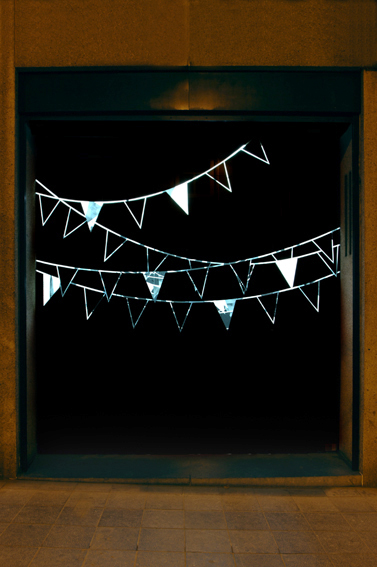
About
Robert Buck
Opne ( in )
07.11.08 → 19.12.08
Let nothing be changed and all be different. Robert Bresson, Notes on Cinematography
I was introduced to Robert Beck through his work in video, both as an artist and producer, at the end of the 1980’s, around the time suspicions began to be voiced that the days were numbered for video as a discrete autonomous zone. Having by then “run away from film theory” just about as far it was destined to go (as video artist Steve Fagin described his own work at that time), the tape-based, monitor-displayed practice of video would over the next decade be displaced by digitally-conceived production viewed either via projection (the bearer of spectacle: cinema, irresistibly) or on personal computer monitors and similar devices (the intimate address of television: the tube is You). Despite never being anything other than variegated in its communities of users, it still could be said that video art had drawn much of its animating feistiness from remaining unclaimed as a sector by both cinema and television, and so to that extent, there’s a mild irony from witnessing how the specificity it once had has since been dispersed across those two omnivorous realms, its borders redrawn and its territorial resources parceled out to the victors. (As ironic mutations go, those pale alongside the gaping one of video art, once vaunted for its commendably utopian rejection of commodity value, seeing its products and its very ethic become irretrievably worth-enhanced in the 1990’s through the gallery practice of “limiting” it in its “editions,” one of the more alchemical “readjustments” of the global art maw.)
By way of an introduction, this detour in advance (Wilde to Gide: “Promise me from now on never to write “I” any more…”) to Robert Beck’s practice is meant to suggest something of the video art situation at the time I found his work, which coincided with his salaried tenure at Electronic Arts Intermix, New York’s premier artists’ video distributor since the early 1970’s. By 1983 Beck had already passed through NYU’s film school and had yet to begin the Independent Study Program of the Whitney Museum, but as he emerged in the 1990’s as a visual artist, video had become only one of his image-making resorts, and by no means the privileged one. Yet it’s the moving image – cinema, video art, television – that haunts his drawings, photographs, even sculptures, partly through his insistence that any given piece derives its expressivity from the images he places alongside it (the theory of montage as an organizing principle: each single film frame requires every other one to mimic reality), and partly through how the exquisitely hand-crafted stillness of his imagery discloses the artist’s imagination to be one that’s compelled to envision what he renders in time.
The signature temporal dimension evoked in Beck’s work is that of the moment after: after the rifle’s been discharged, after the stag’s been felled, after the neighborly predator has left the men’s room stall, after a succession of puzzled children has submitted to a therapist’s descent and after the board’s been cleared of the day’s mistakes. Time lurches like a rope-ladder from a bedroom window, then stops, then snaps. And then. Then what ensues? This: an improvised shrine to the memory of the departed, and a chalkboard from which yesterday’s lessons have been erased before being layered over by those marking the bewilderments of tomorrow. So a Beck gallery installation amounts to the mise-en-scène of a man who has just left the room. That man? He’d been hiding among us in plain sight. Now, gone – dust. If he were a criminal, we’d harvest what he’s produced first as clues, then as evidence. His moniker: the Eraser.
Time’s bequest, consoling when accepted as an inheritance, is narrative, a therapeutic activity enabled in turn by memory. Beck’s narratives are obsessive, here meaning unable to be resolved, hence able only to be varied in the angle taken to view the repetition. Growing up as he did (a Maryland childhood around 1960), his world would be that of a Vatican II-bridged Catholic conscription with all that entailed in the sacristy no less than in the class-room, and of recommended-as-compulsory New Frontier-era “activities for boys,” and of the elaborated middle-class family life as it might have made itself felt to a “sensitive” kid.
Reflecting on that, reflecting from that, Beck grounds his work in autobiography, and from the drives such as that background might (or might not) conjecturally engineer in an adult soul, but the effect at day’s end is hardly that of someone up to his neck in it; as a confessor, he pleads no extenuating circumstances. Instead, reflection is cut with reticence, a form of withholding or discretion (split the difference and call it taste), leading him to create, from what he remembers and what he desires, startling visual forms crafted to simulate acts and re-enactments of witnessing what we’ll never know, and to preempt what any higher judgment might overturn or endorse. This is not about him, all honestly: the abiding drama, the wound and the bow, is the drama of his surfaces.
— Essay by Bill HORRIGAN